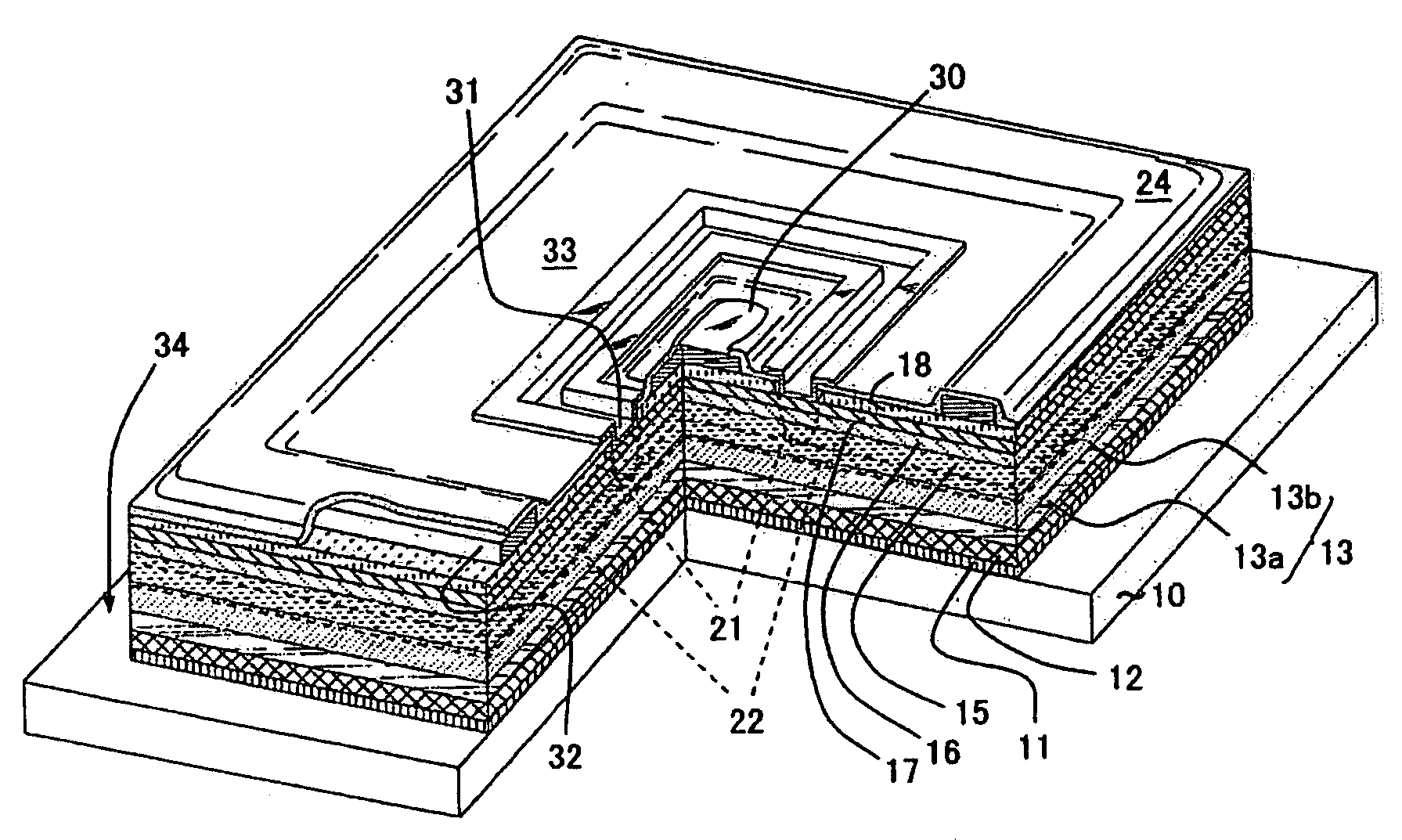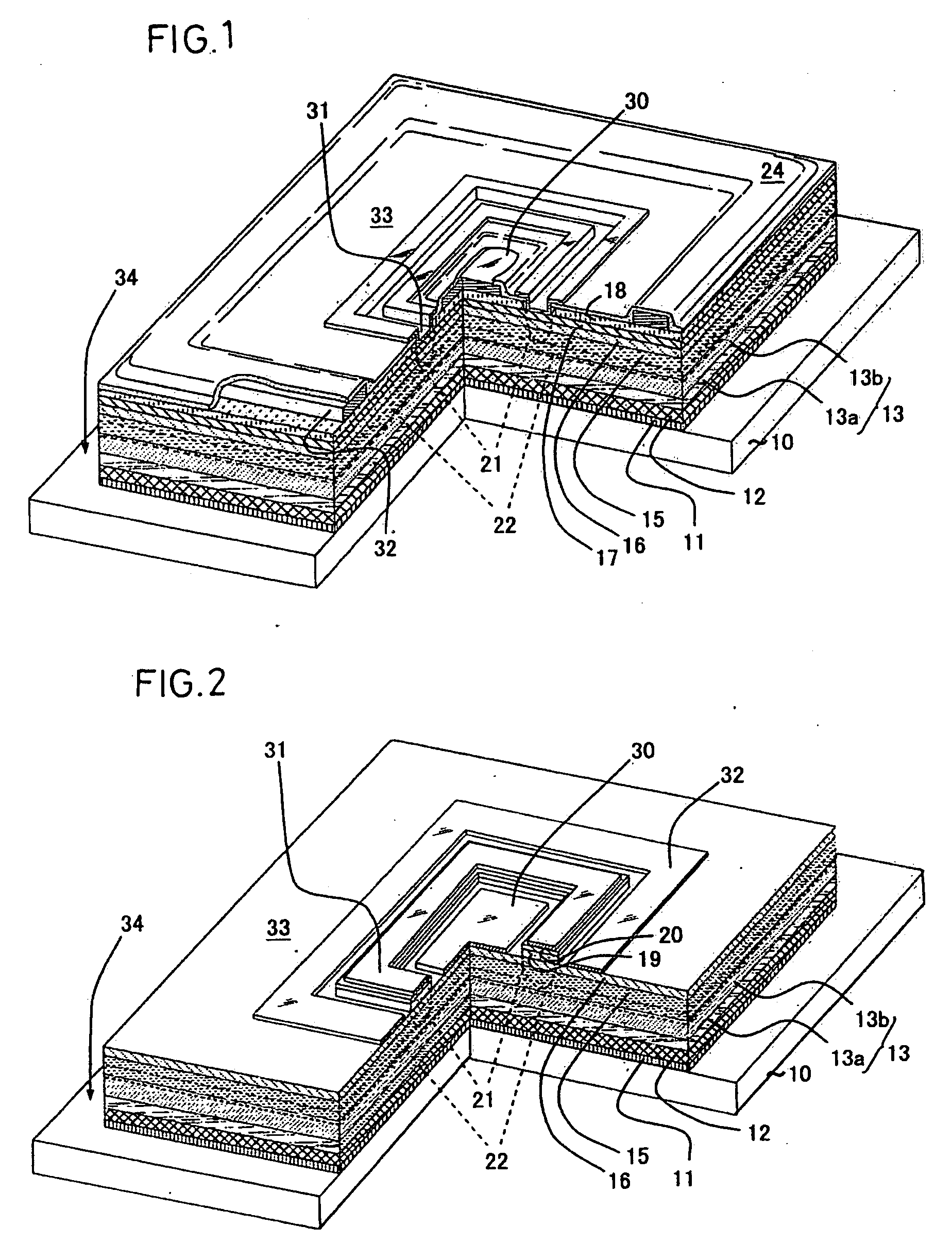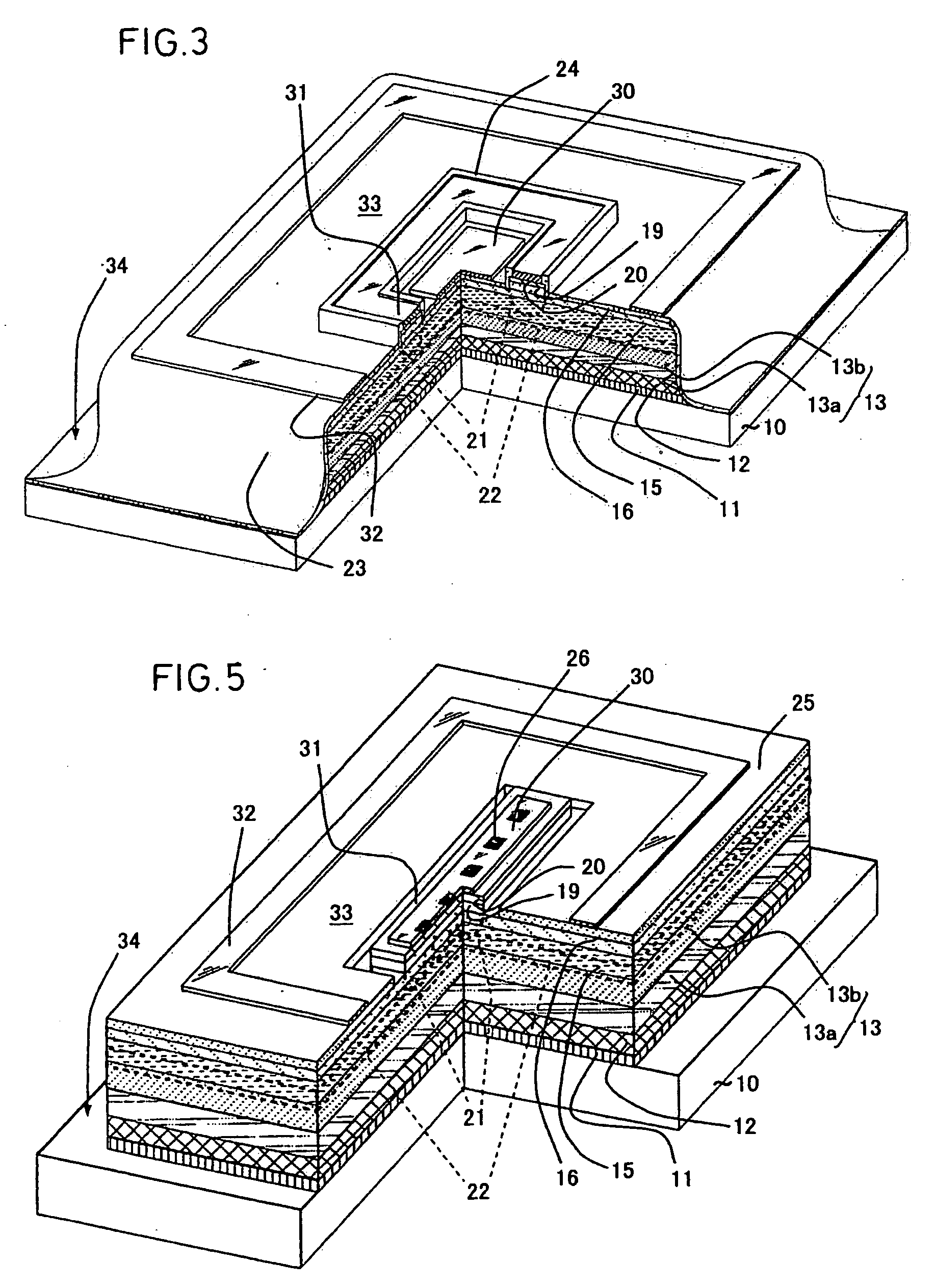In the case of the PMT and
avalanche photodiode, however, there are intrinsic problems to establish a
detector array, since a highly accelerated
voltage is required for accelerating and multiplying electrons generated by light in a vacuum or
solid substance, and since there are considerable variations in the multiplication characteristics.
Therefore, the EB-
CCD camera as a product is too expensive to reach a level that satisfies extensive demands.
Further, the PIN photodiode is low in sensitivity and is greatly affected by a readout
noise from an external
amplifier, and has no charge storage mechanism, unlike the
silicon CCD.
Another serious problem posed by a background photodetector is that a sensitive
wavelength region is limited.
Though an image
pickup device has been developed in various aspects within a visible region, the image
pickup device has insufficient sensitivity at an
ultraviolet region in the
wavelength of 150 nm to 300 nm or at an infrared region in the
wavelength longer than 1 μm.
The image
pickup device has been required to dispose a plurality of photodetectors having different sensitive characteristics to cope with a wavelength region over a wide range, resulting in a complicated optical
system.
However, the photogenerated carriers are dissipated without any countermeasures because the respective contact parts of the source and drain have to be deservingly deprived of
silicon oxide film for a
gate insulator.
The device isolation process of the VMIS is rather difficult since it is a bipolar device.
Thus, the device fabrication process becomes complicated as compared to an ordinary
CMOS image sensor.
Furthermore, the FPA has not yet solved the problem of a large influence of a readout
noise by an external
amplifier since it is required to amplify a minute current induced by photo-generated
electron-hole pairs corresponding at most to the number of photons in the incident light, similarly to the case of a discrete PIN photodetector.
This device, however, has some drawbacks.
Since the InGaAs channel layer that serves as a light-absorbing layer is thin, the absorbing efficiency for the long-wavelength light is not good and an improvement such as
waveguide coupling is necessary.
Another problem is that the threshold value is apt to be instable since impurities in the InAlAs are moved easily.
While Al-free InP is advantageous as a gate material from the viewpoint of reliability, some difficulties remain: a Schottky junction is difficult to form; a leakage current is induced from the surface and from the interface between the substrate and the epitaxial layer.
Concerned about a photodetector based on a compound
semiconductor-based FET structure, excluding a silicon-based one, it is still impossible to obtain a photo-FET having a sufficiently satisfactory optical sensitivity even when the technique disclosed in Document 6 is used along its
gist to fabricate a device, which is considered as being excellent in the background art documents.
Even when the trench-digging technique, as disclosed in Document 7, has been incorporated therein, this cannot be effective according to the experiences of the present inventors because the formation of a
dielectric insulation film induces leakage of a current through the surface of the trench.
It is, as a matter of course, undesirable to require such high accuracy for the device fabrication, because of the large number of steps required and their complexity.
Since satisfactory optical sensitivity has not yet been obtained, the background art techniques have not yet reached a level that can sufficiently be advocated in future without any modification.
 Login to View More
Login to View More  Login to View More
Login to View More 


